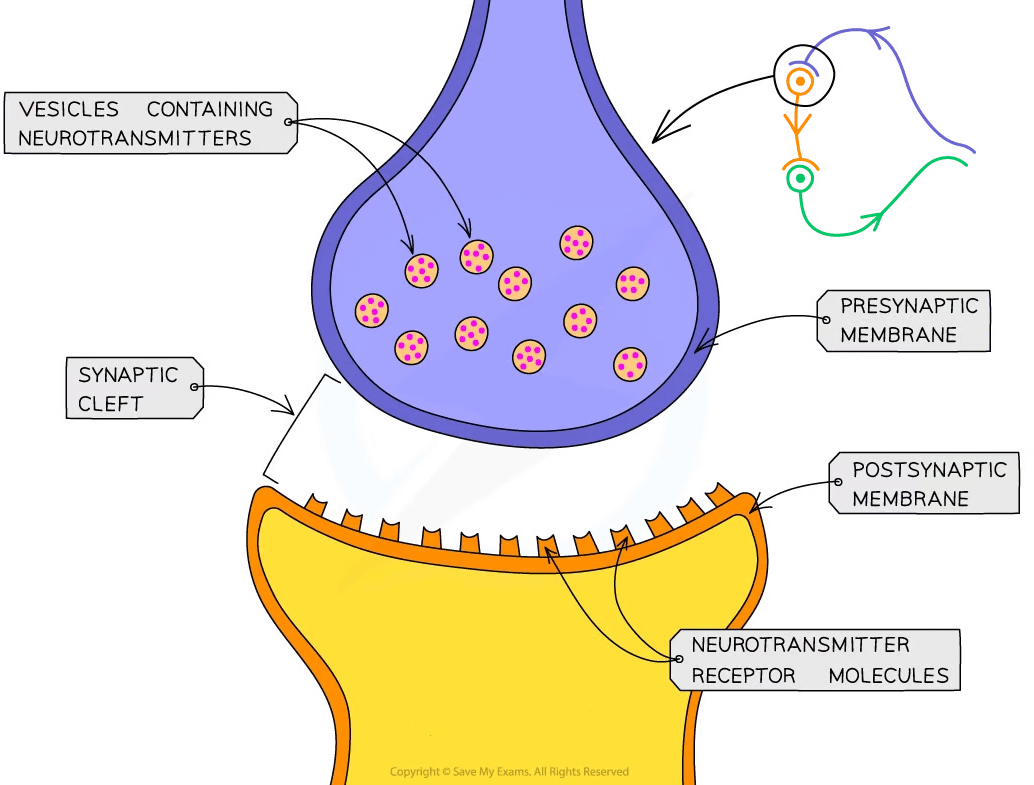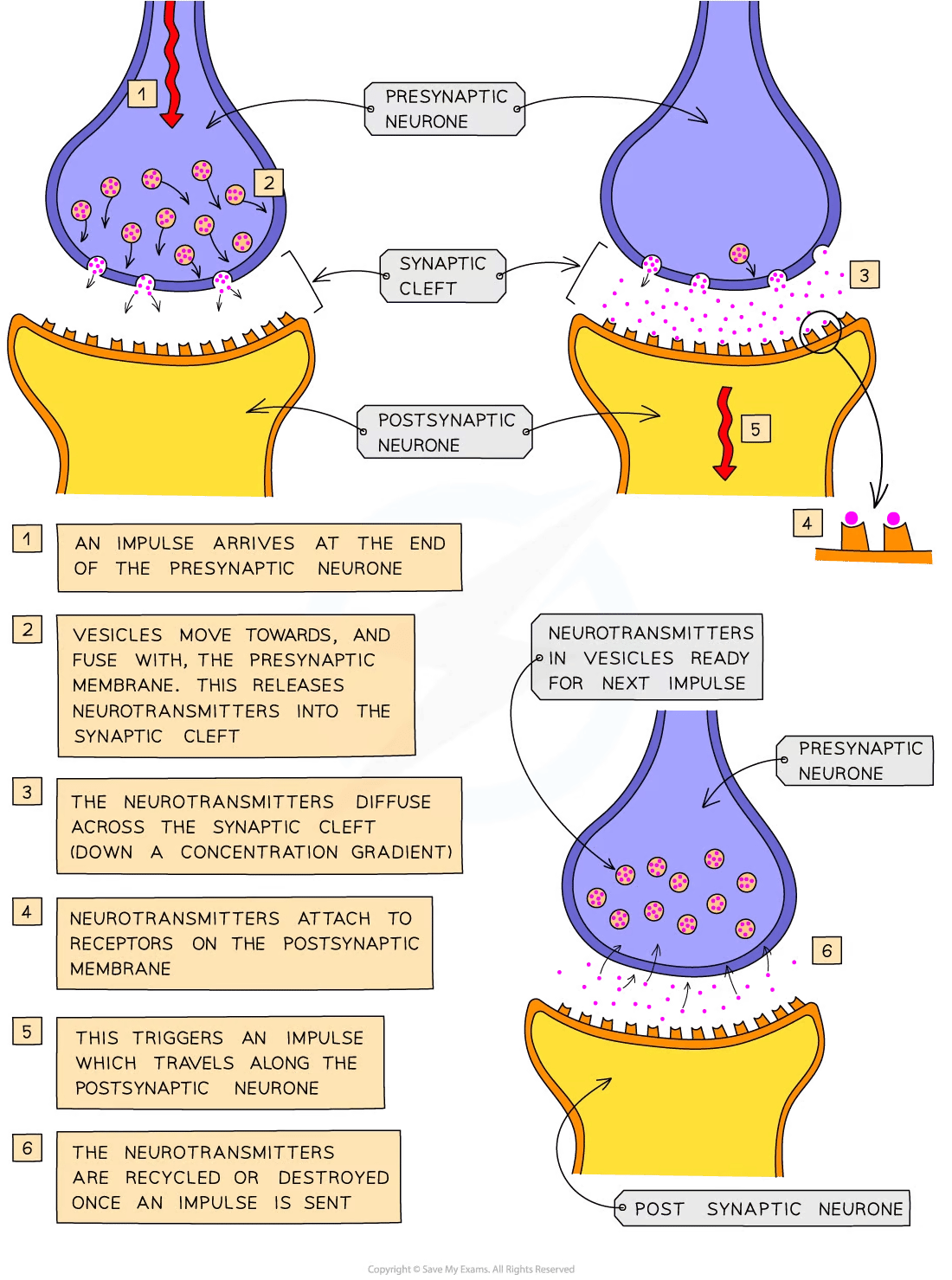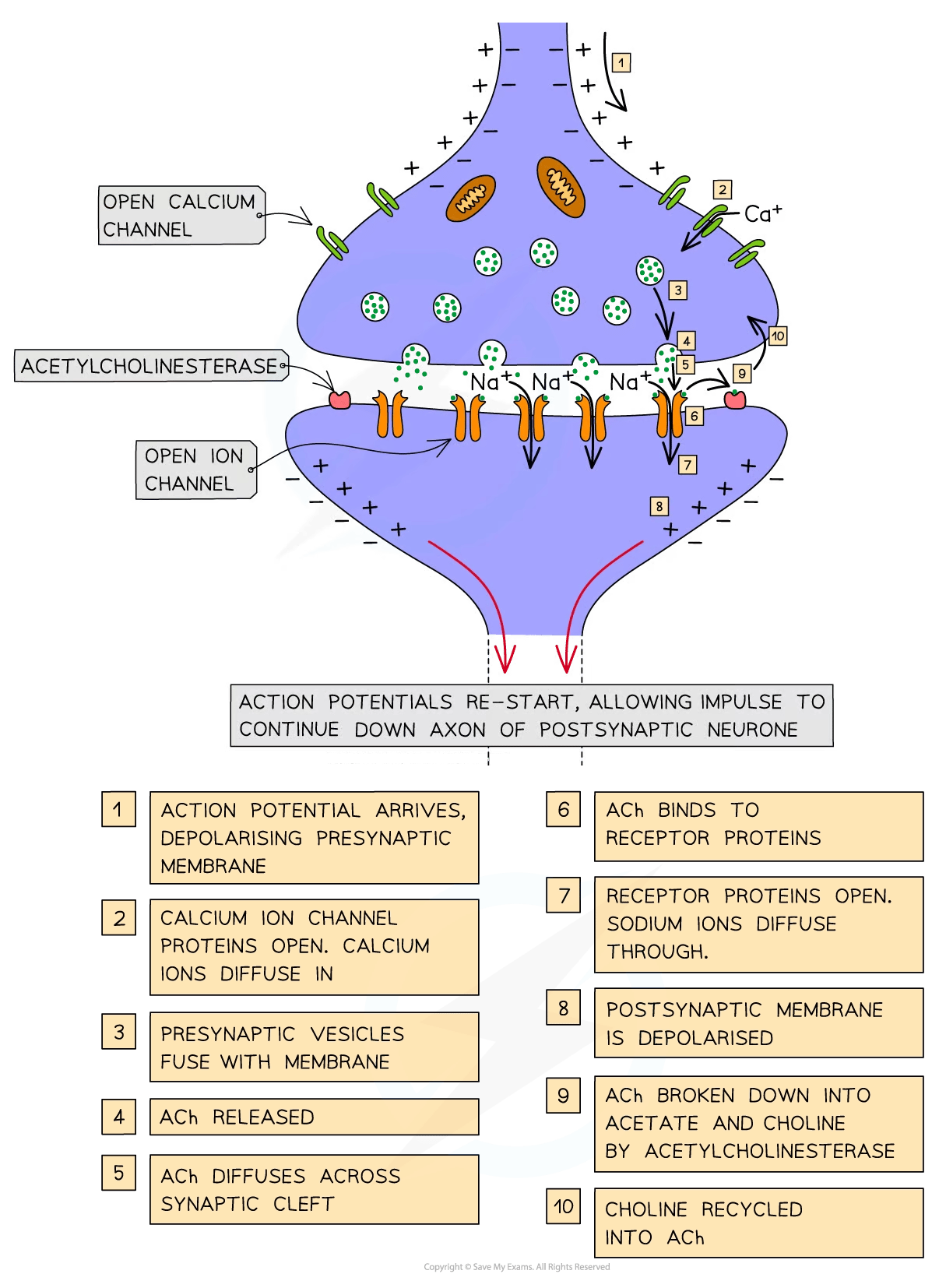Cholinergic Synapses (Cambridge (CIE) A Level Biology): Revision Note
Exam code: 9700
Cholinergic synapses
Where two neurones meet, they do not actually come into physical contact with each other
A very small gap, known as the synaptic cleft, separates them
The ends of the two neurones, along with the synaptic cleft, form a synapse

Synaptic transmission—basic mechanism
Electrical impulses cannot ‘jump’ across synapses
When an electrical impulse arrives at the end of the axon on the presynaptic neurone, chemical messengers called neurotransmitters are released from vesicles at the presynaptic membrane
The neurotransmitters diffuse across the synaptic cleft and bind temporarily with receptor molecules on the postsynaptic membrane
This stimulates the postsynaptic neurone to generate an electrical impulse that then travels down the axon of the postsynaptic neurone
The neurotransmitters are then destroyed or recycled to prevent continued stimulation of the second neurone, which could cause repeated impulses to be sent

Synaptic transmission—detailed mechanism
There are over 40 different known neurotransmitters
One of the key neurotransmitters used throughout the nervous system is acetylcholine (ACh)
Synapses that use the neurotransmitter ACh are known as cholinergic synapses
The detailed process of synaptic transmission using ACh is as follows:
The arrival of an action potential at the presynaptic membrane causes depolarisation of the membrane
This stimulates voltage-gated calcium ion channel proteins to open
Calcium ions diffuse down an electrochemical gradient from the tissue fluid surrounding the synapse (high concentration of calcium ions) into the cytoplasm of the presynaptic neurone (low concentration of calcium ions)
This stimulates ACh-containing vesicles to fuse with the presynaptic membrane, releasing ACh molecules into the synaptic cleft
The ACh molecules diffuse across the synaptic cleft and temporarily bind to receptor proteins in the postsynaptic membrane
This causes a conformational change in the receptor proteins, which then open, allowing sodium ions to diffuse down an electrochemical gradient into the cytoplasm of the postsynaptic neurone
The sodium ions cause depolarisation of the postsynaptic membrane, re-starting the electrical impulse (that can now continue down the axon of the postsynaptic neurone)
To prevent the sodium ion channels from staying permanently open and to stop permanent depolarisation of the postsynaptic membrane, the ACh molecules are broken down and recycled
The enzyme acetylcholinesterase catalyses the hydrolysis of the ACh molecules into acetate and choline
The choline is absorbed back into the presynaptic membrane and reacts with acetyl coenzyme A to form ACh, which is then packaged into presynaptic vesicles ready to be used when another action potential arrives


Unlock more, it's free!
Did this page help you?